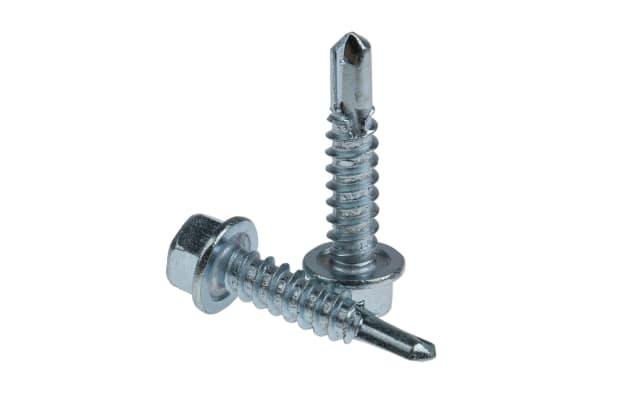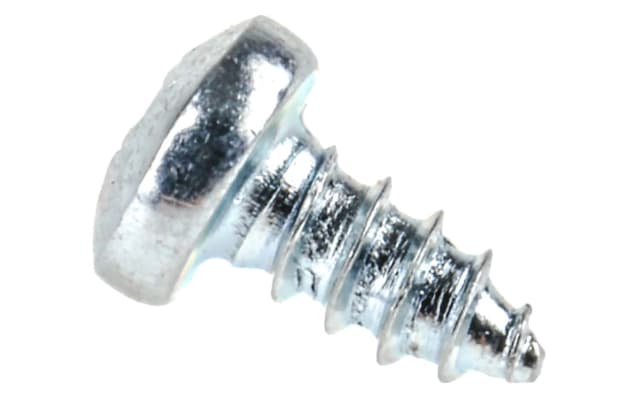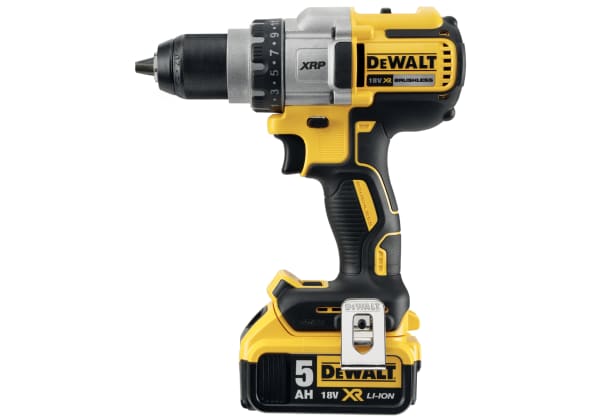- Published 11 Jan 2023
- Last Modified 9 Aug 2023
- 6 min
A Complete Guide to Self-Drilling Screws
Our guide is here to help you understand what self-drilling screws are, their uses, and the types available.

What are Self-Drilling Screws?
Self-drilling screws are a type of screw used in a variety of fastening and fixing applications. Typically made from stainless steel, self-drilling screws are characterised by their drill-shaped point. This point enables the screws to drill into materials without the need for pre-drilled pilot holes, resulting in a more efficient fastening process.
Available in a range of sizes, lengths, and thicknesses, self-drilling screws are handy and versatile. They are sometimes also known as Tek screws. Tek was originally a brand name for a popular manufacturer of these screws, but over time, the name Tek screw has since become synonymous with this type of fastener.
Self-drilling screws can cut through a variety of materials including wood and metal such as softer steel. As a result of this, self-drilling screws are also ideal for more heavy-duty applications and industries, especially when compared to alternatives like self-tapping screws.
What is the Difference Between Self-Tapping Screws and Self-Drilling Screws?
Although they may sound similar and have strong resemblances in their physical appearance, self-tapping screws and self-drilling screws should not be confused. The two terms are often used interchangeably, but in fact, these are two different types of screw. Their differences are important when it comes to best uses and most suitable applications, so you should not be tempted to use one in place of the other as this could result in a weaker joint between materials.
Self-tapping screws tap their own threads but are unable to drill through materials like a sheet of metal. In this case, self-tapping screws would require a pilot hole. However, self-drilling screws feature a pointed drill bit on the screw, negating the need for a pilot hole as the screw can cut its own thread into the material. These screws are more versatile as they are also able to tap, similarly to self-tapping screws. This makes self-drilling screws highly adaptable and ideal for working with a wider range of materials in different environments and industries.
What are Self-Drilling Screws Used for?

Self-drilling screws can be used for a wide variety of applications which involve fastening two different types of materials together. They are commonly used to fasten metal to wood, or even metal to metal.
Some possible uses and applications for self-drilling screws are explored in the sections below:
Self-Drilling Screws for Metal
Self-drilling screws can be used to fasten sheets of metal to another material, or even to join metal to metal. Not only does this set them apart in comparison to other common screw types, but it also makes them highly useful across a broad spectrum of industries and applications. To name just a few examples, ideal uses could include working with metal roofing, HVAC and ductwork, and steel frames.
Self-Drilling Screws for Wood
While purpose-manufactured wood screws are typically the first choice for tasks involving wood, self-drilling screws may also prove useful in certain woodworking scenarios. For instance, self-drilling screws for wood may be used in the construction, repair, or maintenance of sheds and outbuildings, as well as general construction tasks.
Self-Drilling Screws for Plastic
Self-drilling screws can also be used with plastic in certain applications and environments. One instance for using self-drilling screws with plastic could be to fasten sheets or components together when working with ductwork and plastic piping.
Types of Self-Drilling Screws

There are multiple different types of self-drilling screw, each with their own distinct advantages. Typically, the different screw types refer to the variations in both head and body, relating to size, shape, and design. It should also be noted that self-drilling screws are available in both fine thread and coarse thread types.
The following sections provide further detail on some of the main self-drilling screw types:
Countersunk Self-Drilling Screws
Countersunk self-drilling screws come in a variety of subtypes, including different sizes. They are also available both with and without wings, providing a greater degree of flexibility for various projects.
Low Profile Self-Drilling Screws
Low profile self-drilling screws are ideal for use in environments where an unobtrusive fixing is required. Available in various subtypes, including baypole self-drilling screws, wafer-head screws, and pancake-head Tek screws, low profile self-drilling screws make for adaptable choices. Each of these types features subtle variations making them ideal for varying applications and requirements.
Self-Drilling Screws with Wings
Some types of self-drilling screws feature wings which are designed to help when drilling into thicker or more heavy-duty materials such as metal. The wings are added to help enlarge the hole, providing an easier path for the thread and rest of the screw to follow.
What are Self-Drilling Screws Made of?
The most common material for self-drilling screws is stainless steel. Other materials are sometimes available, but these are far less common. Stainless steel self-drilling screws are tough and durable, a quality which makes this material a great choice for screws of this type.
Stainless steel self-drilling screws are also available in a range of finishes, including:
How to Use Self-Drilling Screws
Understanding how to use self-drilling screws is relatively straightforward. These screws are simple to operate once you know the basics, yet accuracy is still important to maintain a quality finish and well-completed task.
Follow the steps outlined below for basic guidance on using self-drilling screws:
- The simplest way to use self-drilling screws is to use them with a drill
- Firstly, ensure that the drill possesses a hex adapter (you should be aware that an alternative may be required, depending on the screw head)
- Fit the screw securely onto the drill’s adapter
- Confirm that you have clearly marked the point on the material where the screw needs to go
- Simply drill through the target material, keeping a firm and steady grip as the screw is drilled into place
Related Guides
Related links
- Self-Tapping Screws Guide
- RS PRO Steel Self Drilling Screw x 6in Long
- RS PRO Bright Zinc Plated Steel Self Drilling Screw M4.8 x 25mm Long
- RS PRO Bright Zinc Plated Steel Self Drilling Screw M5.5 x 25mm Long
- RS PRO Black Steel Plasterboard Fixings x 1in Long
- RS PRO Zinc Steel Plasterboard Fixings x 3/4in Long
- Screws Buying Guide
- A Complete Guide to Wood Screws



